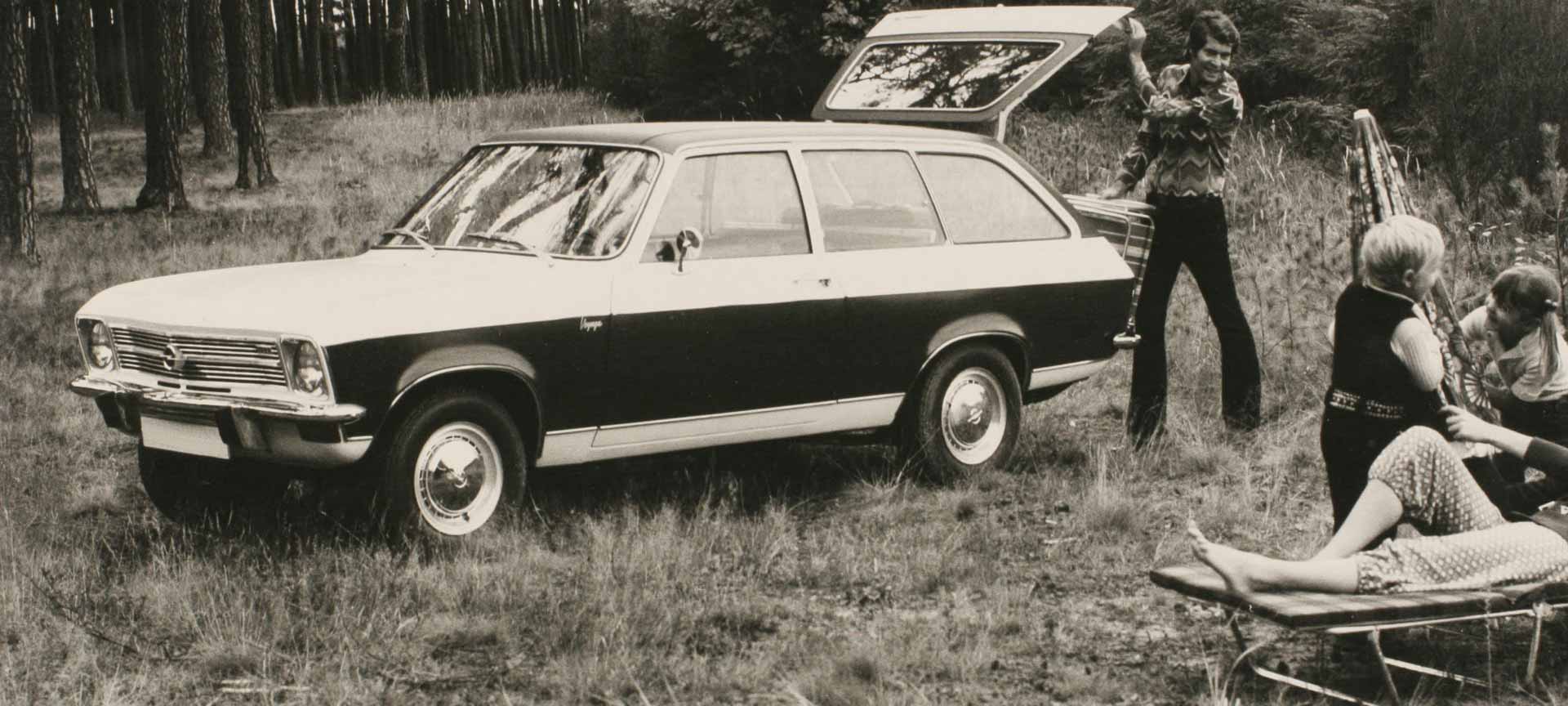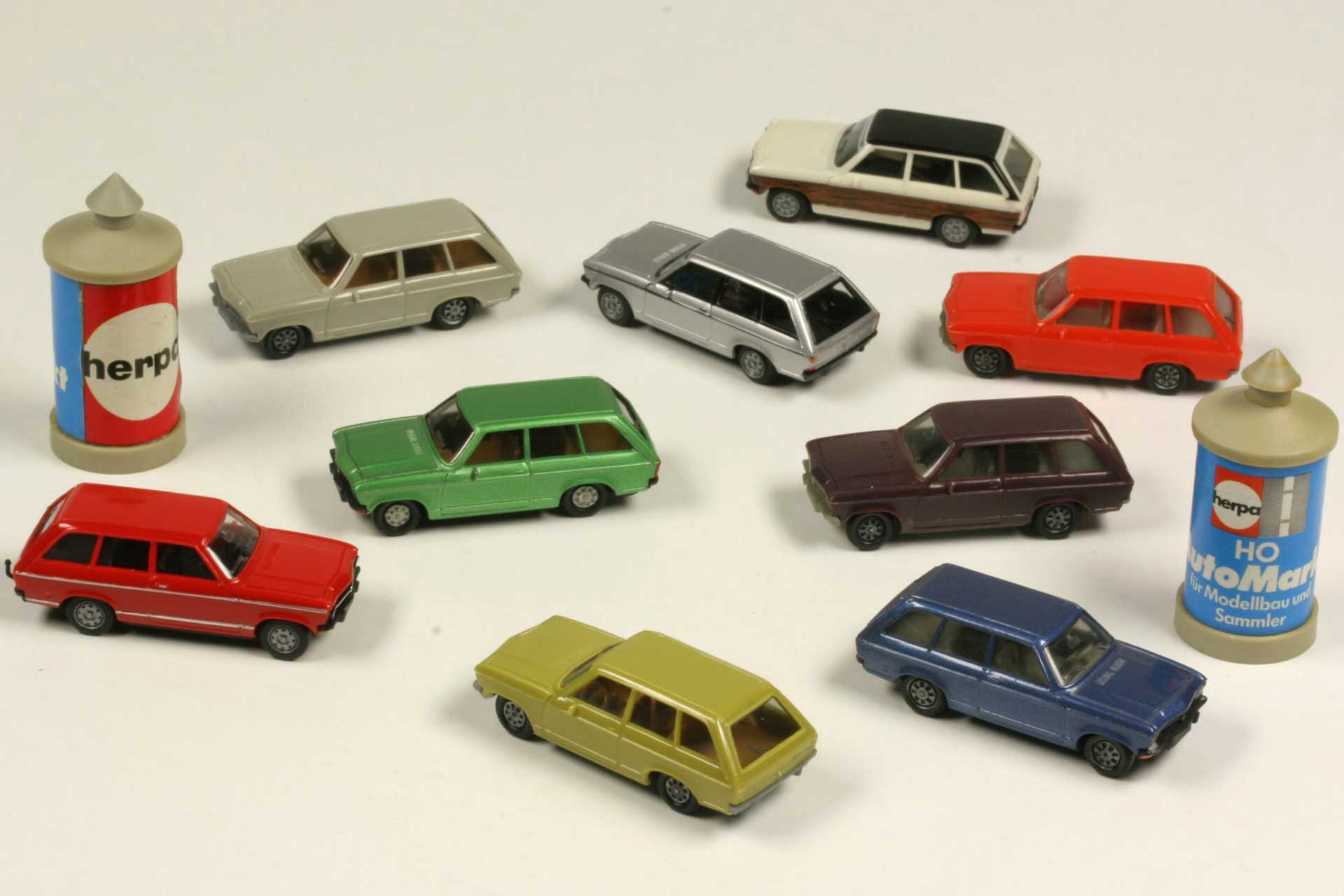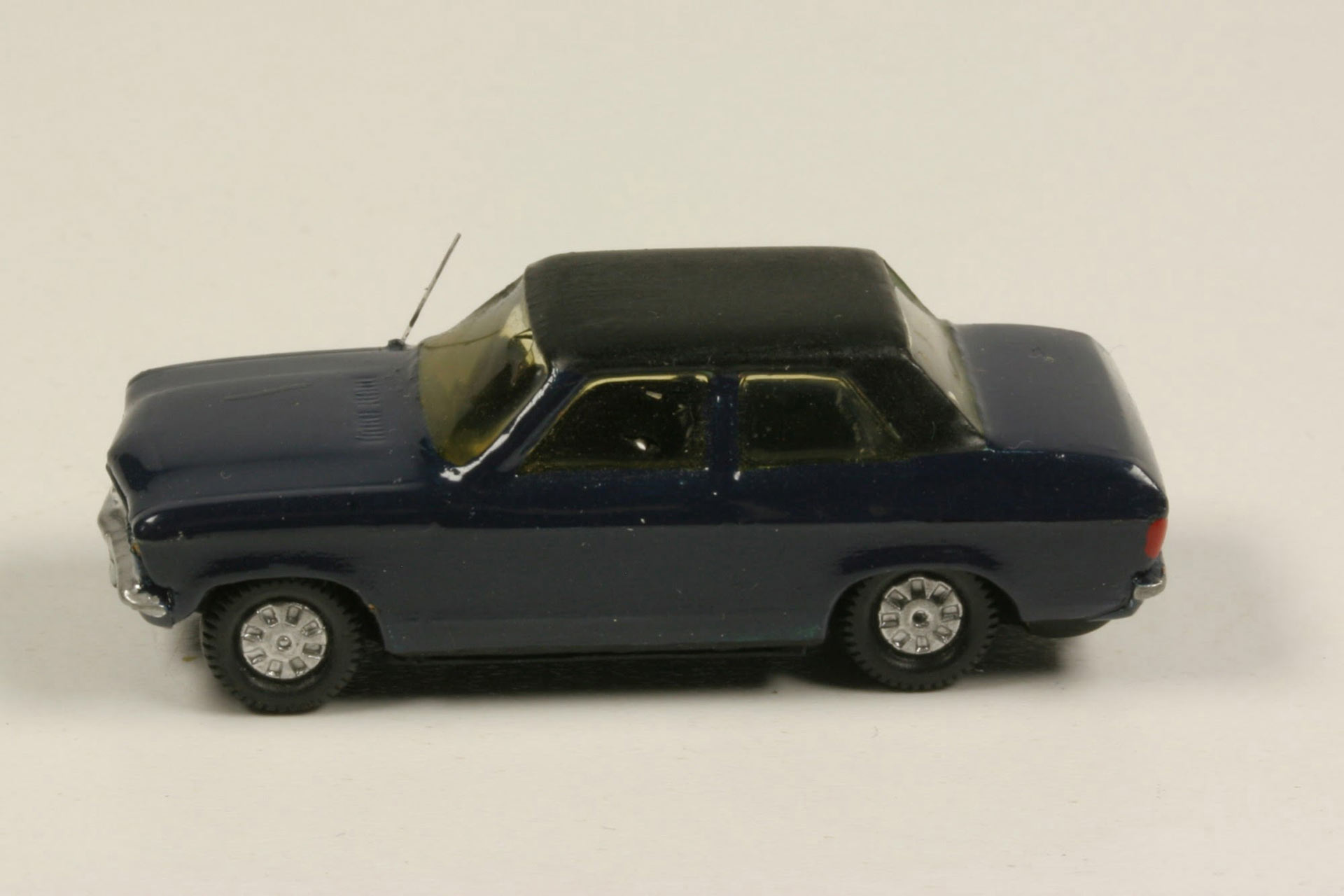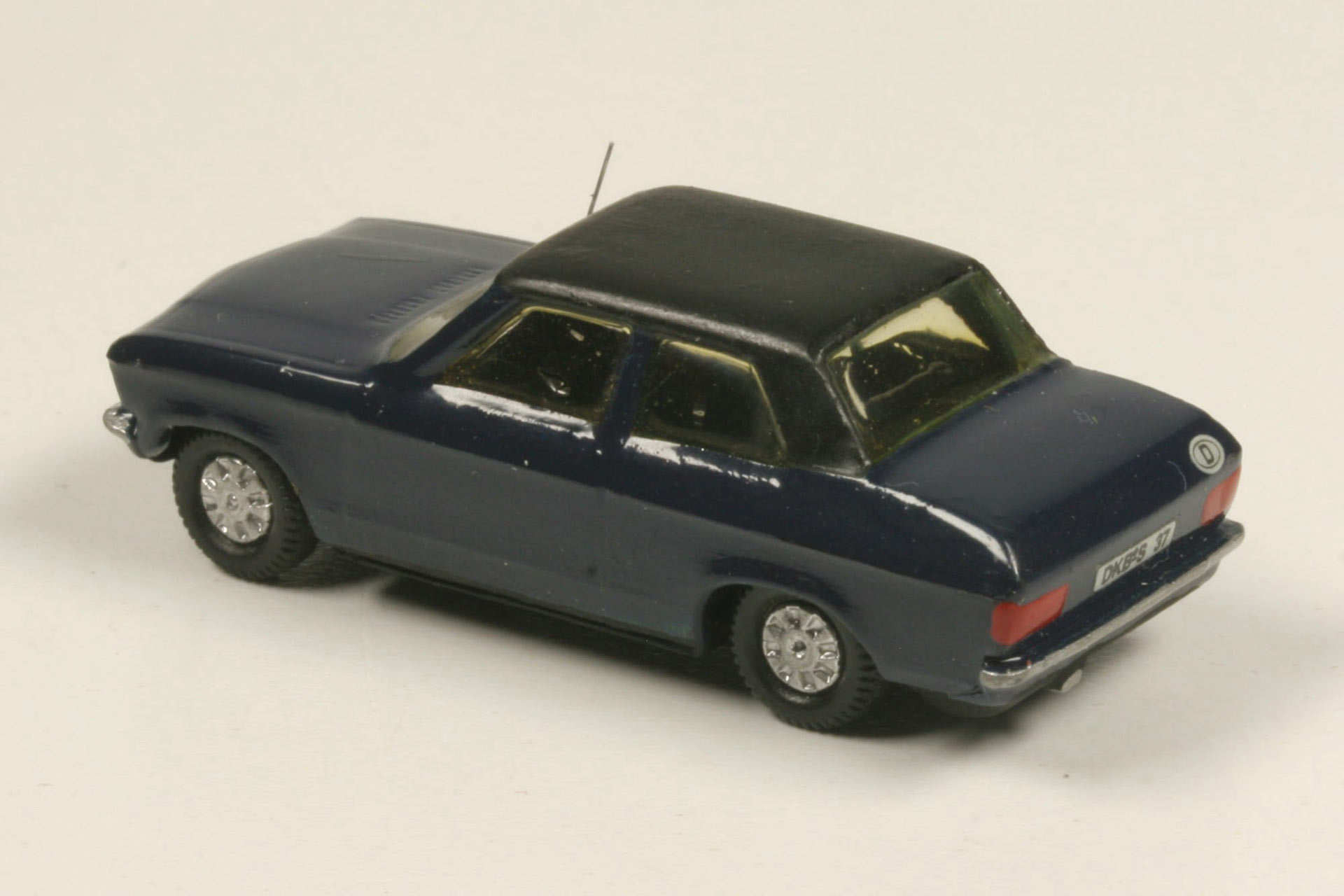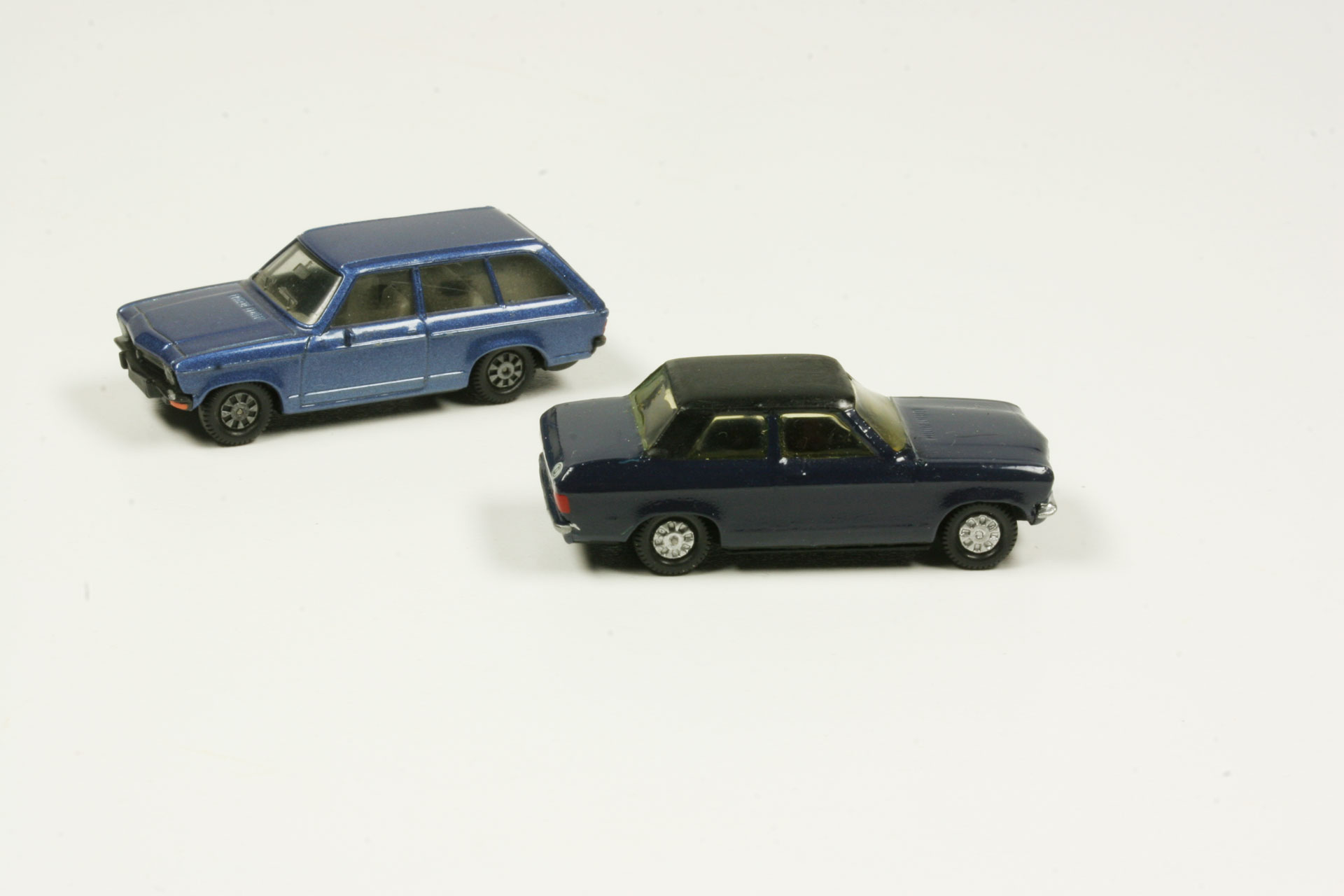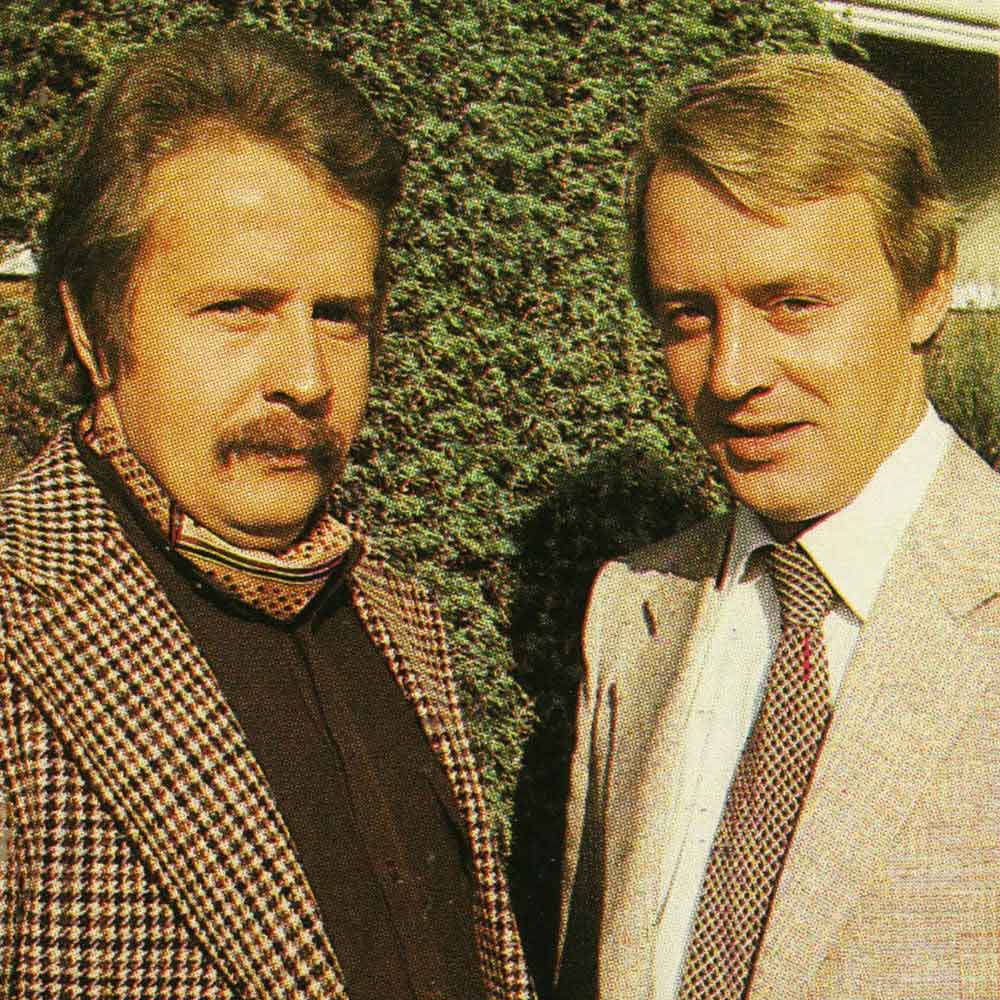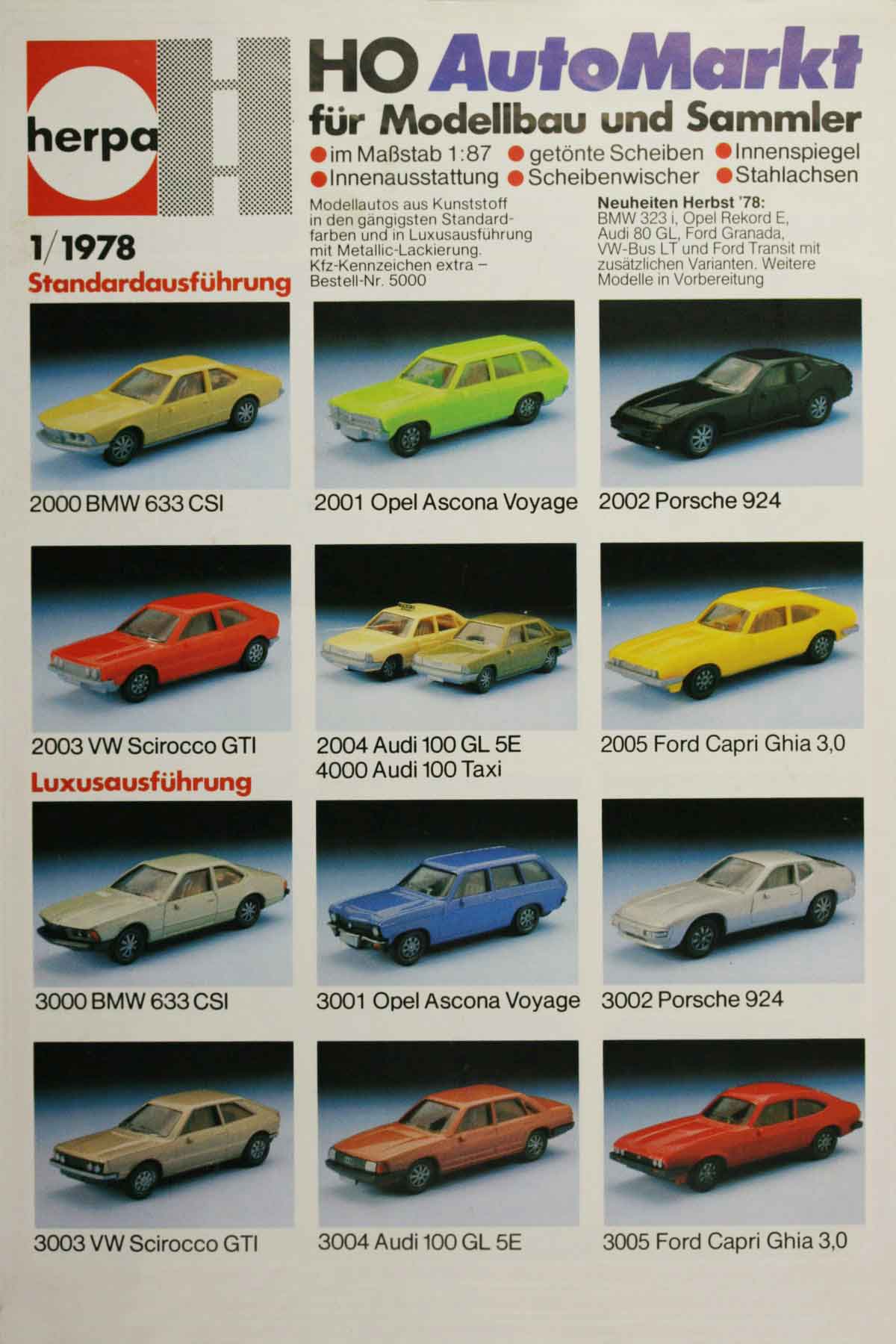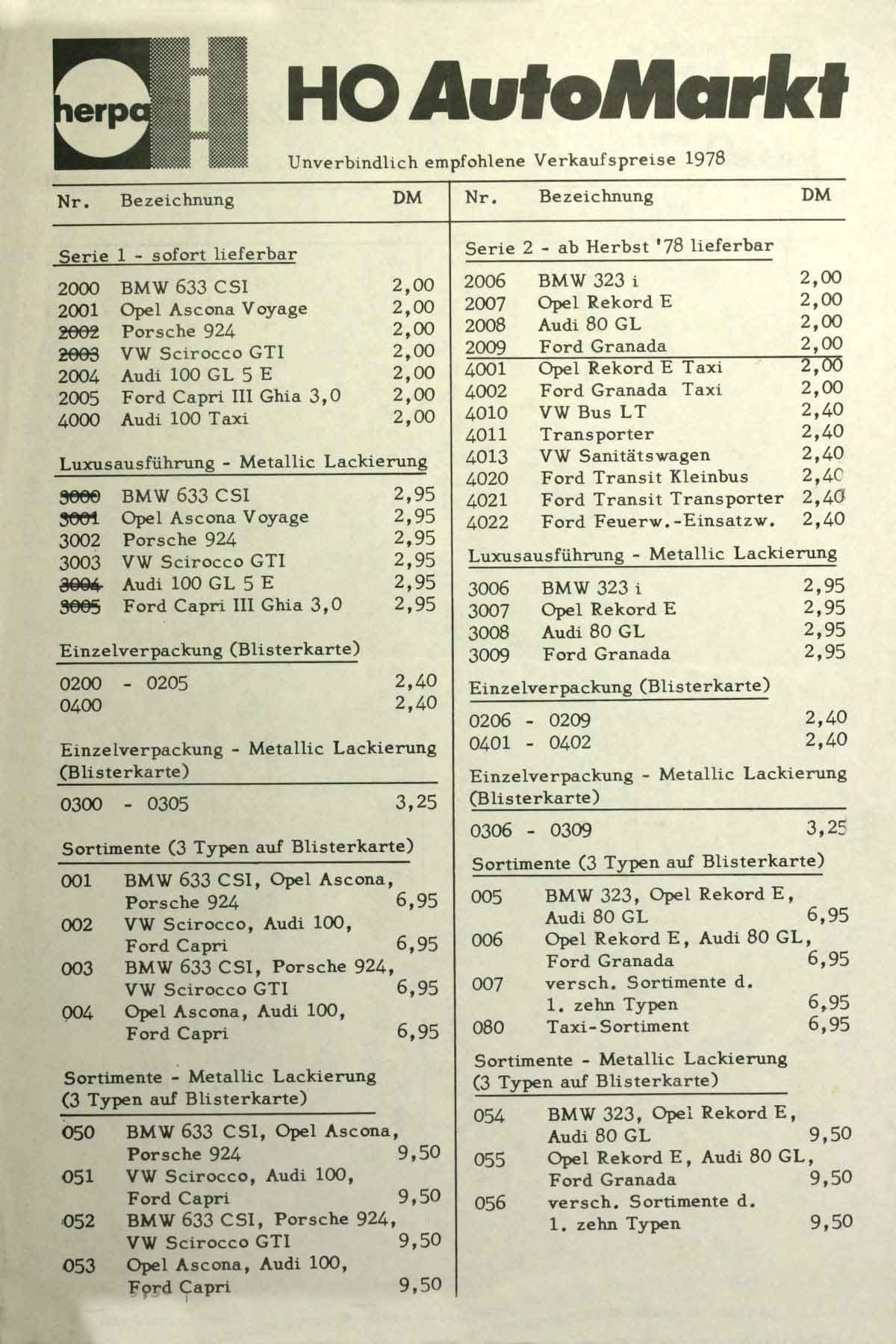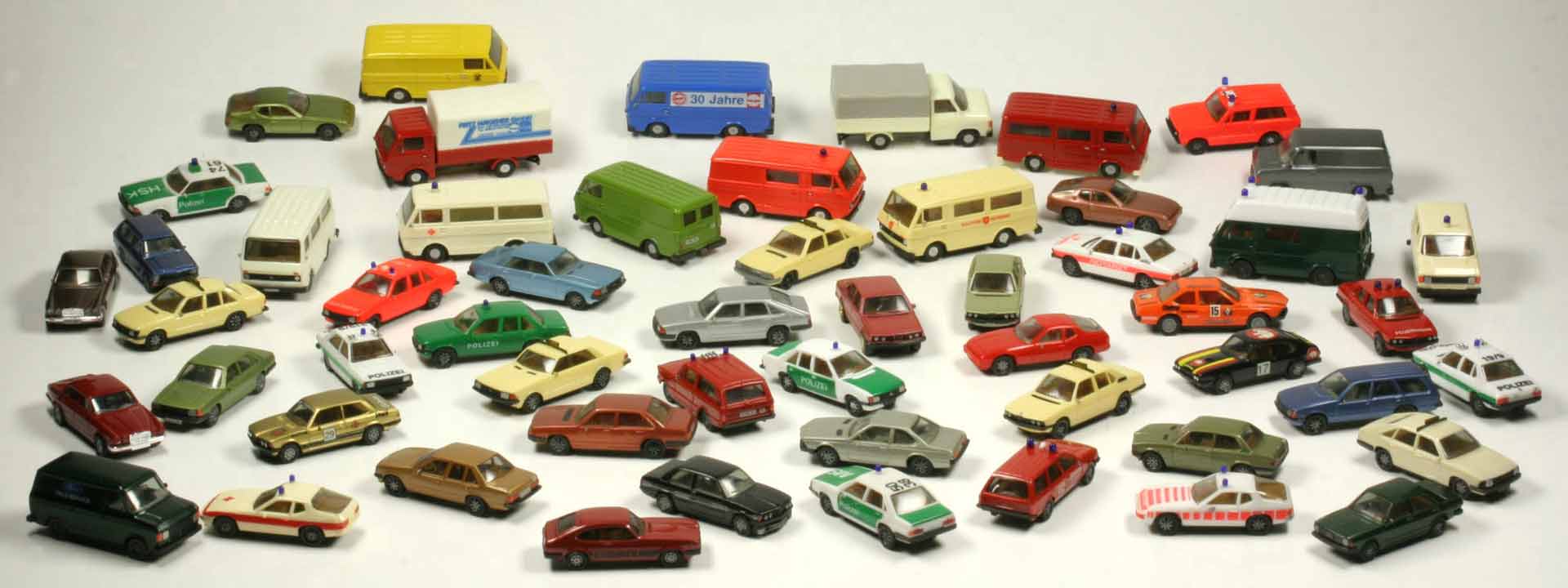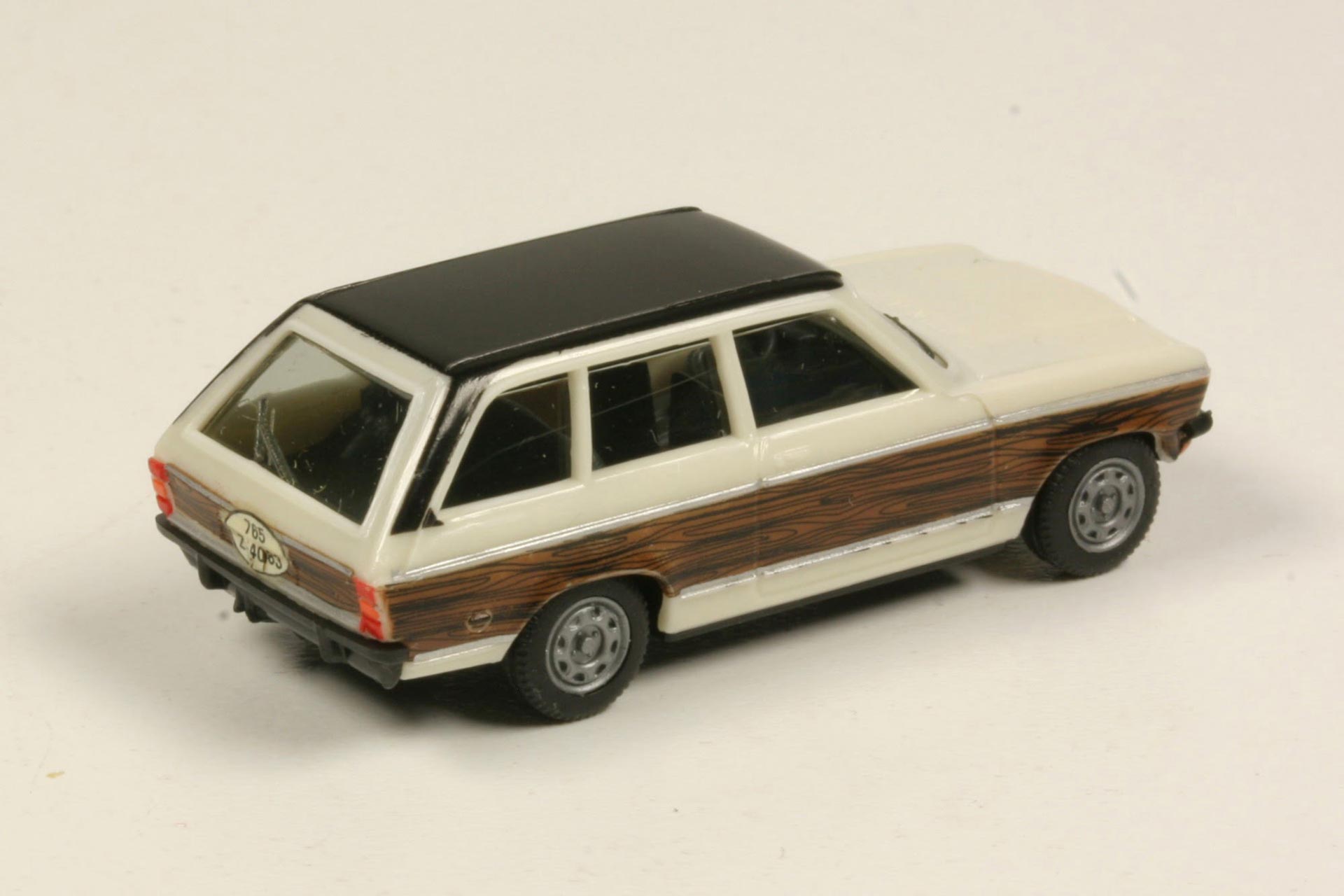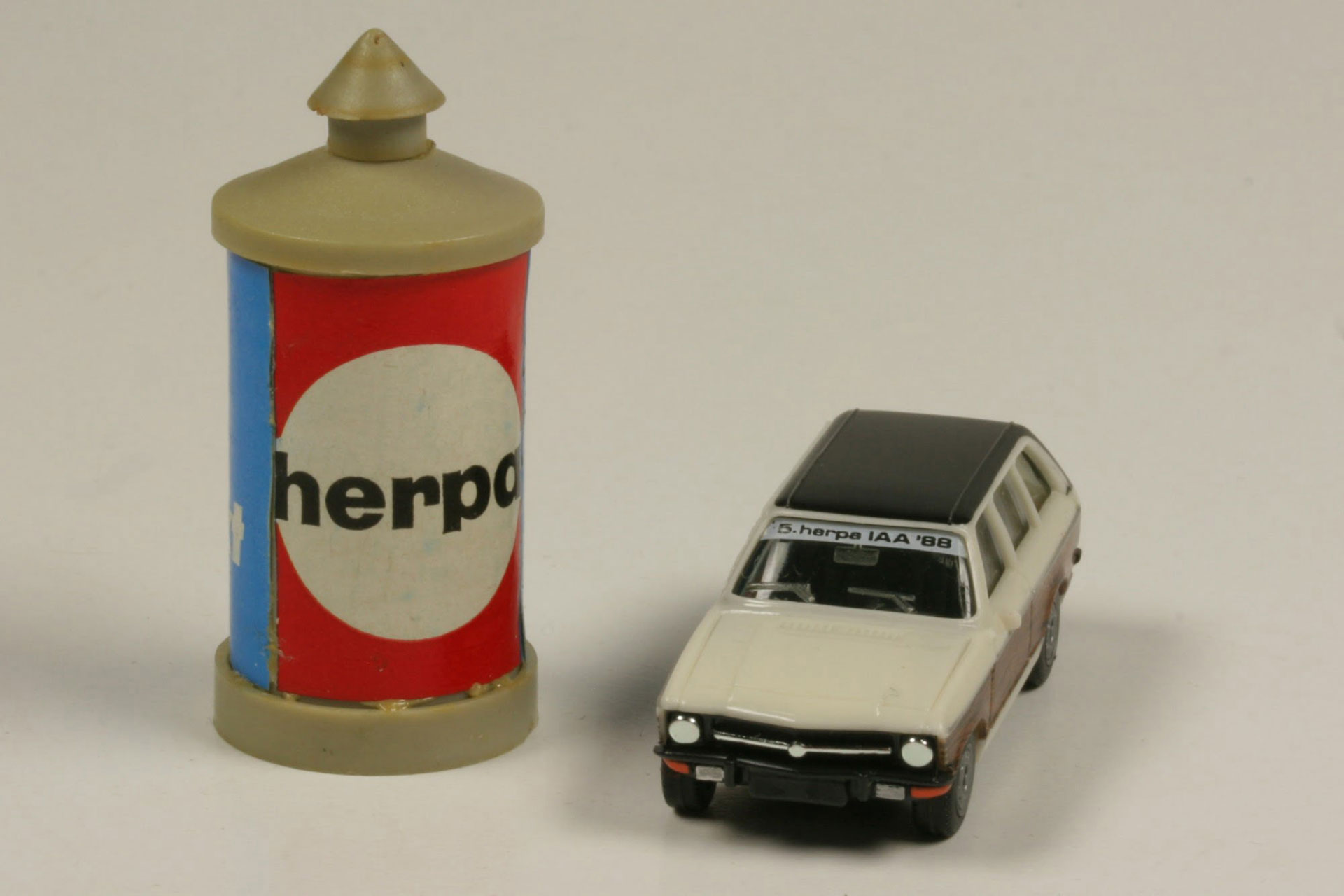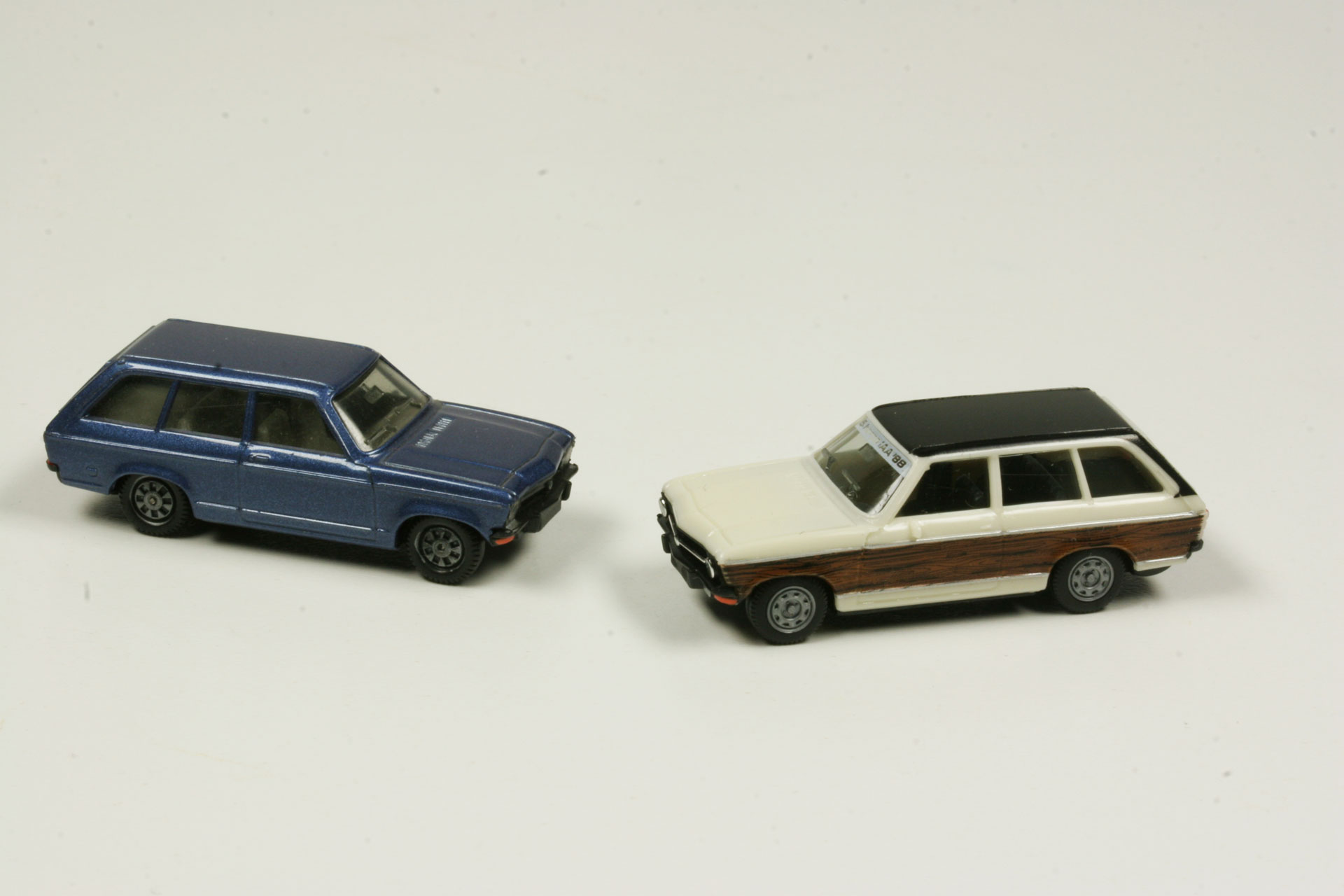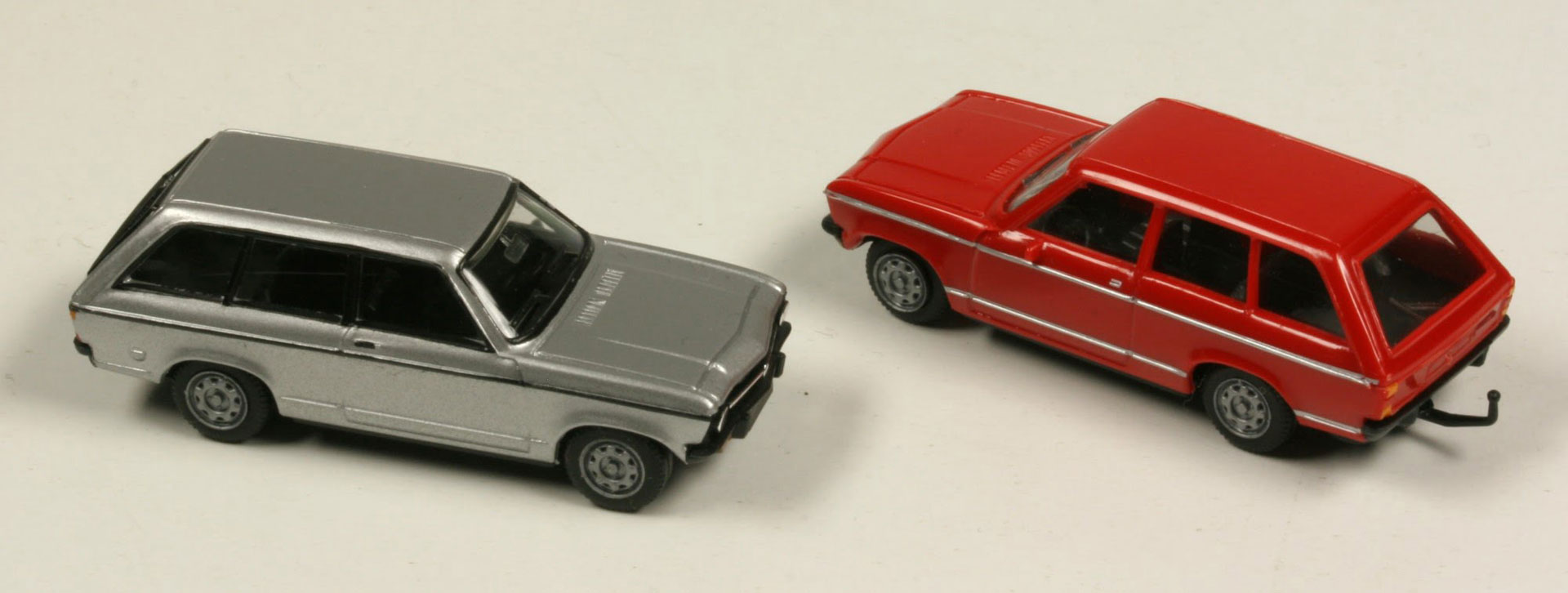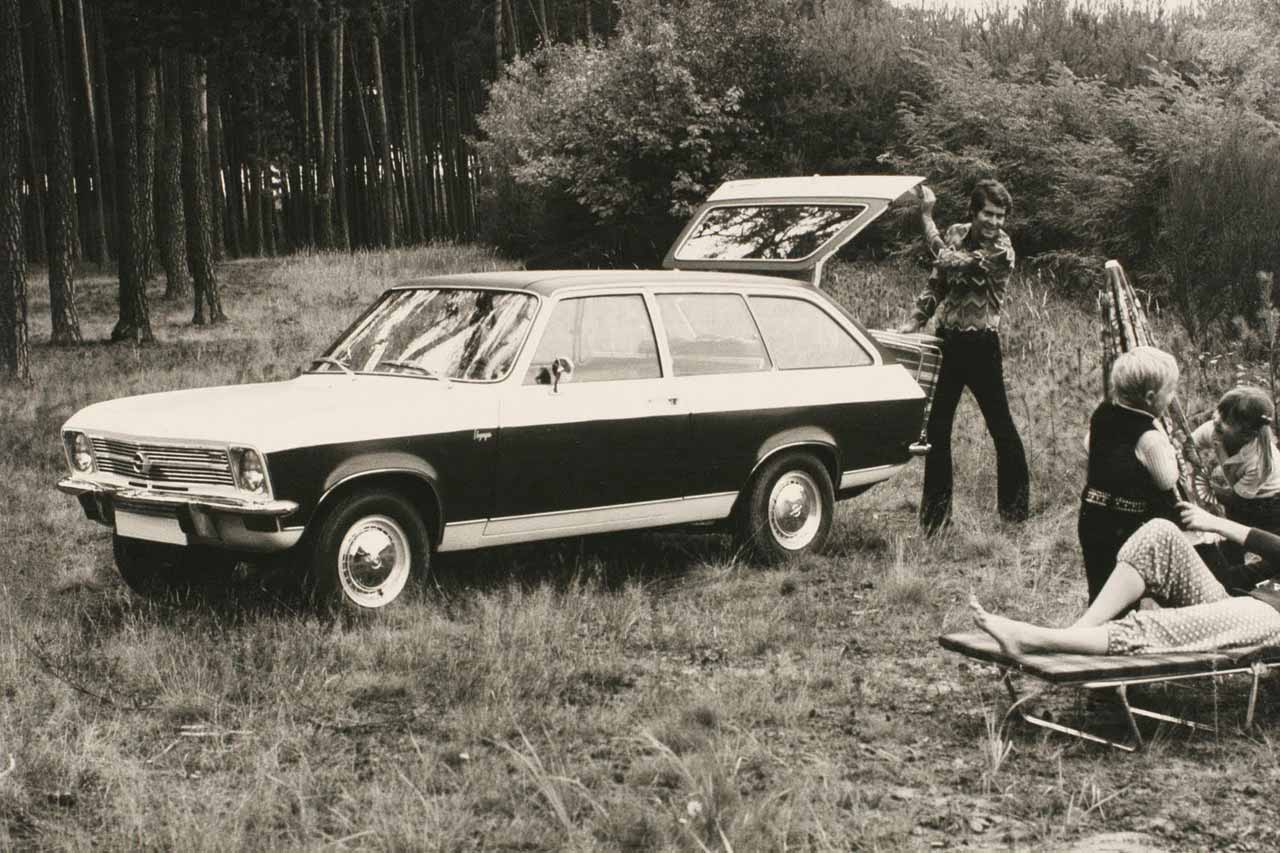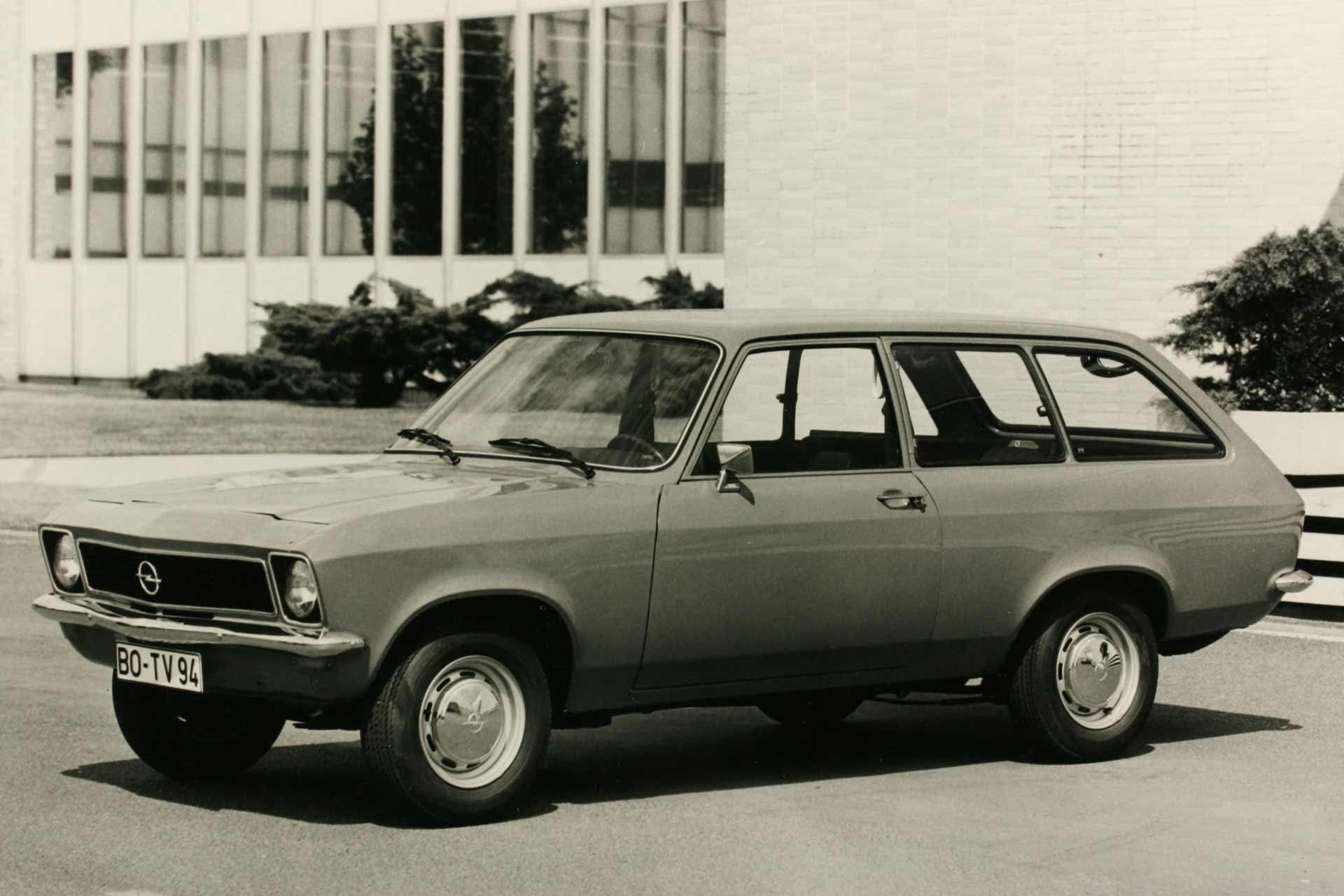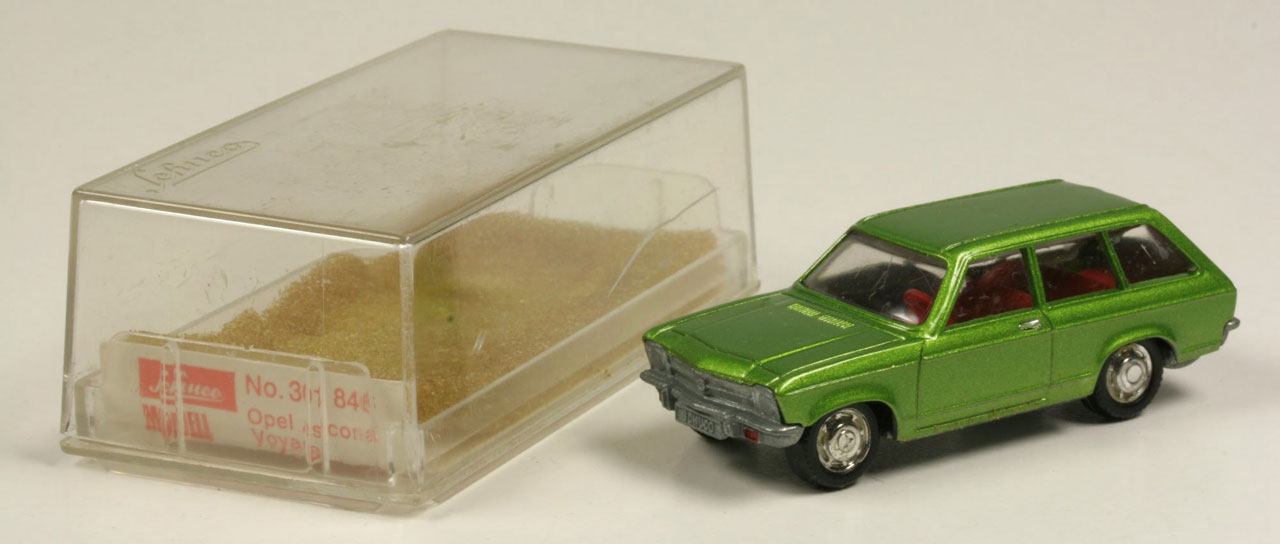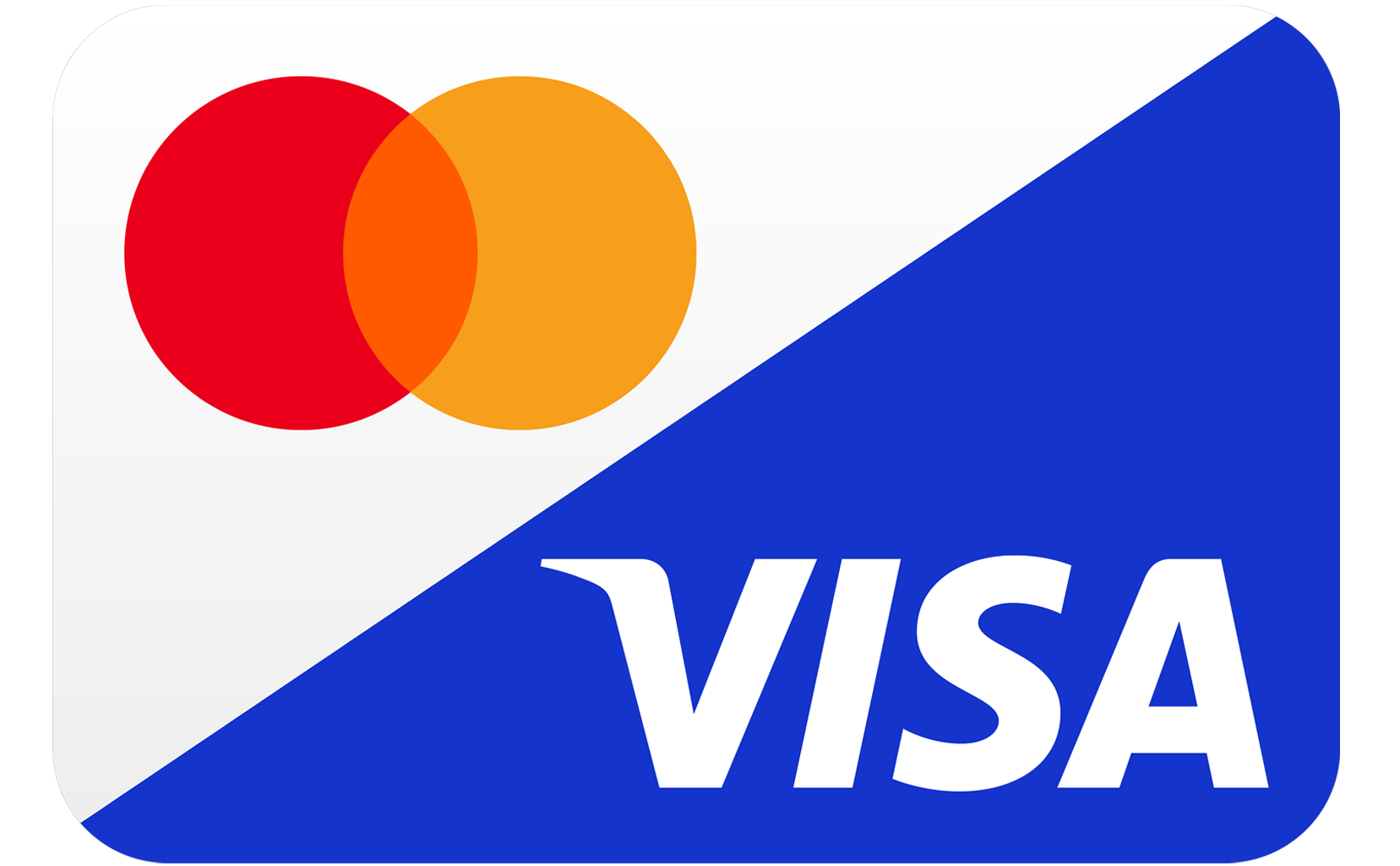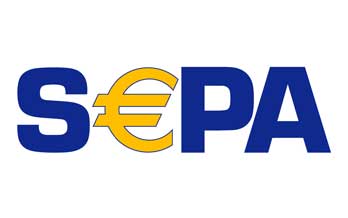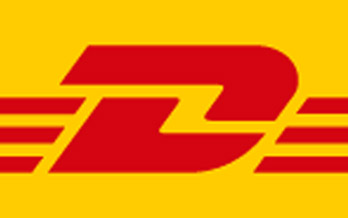Herpa’s first car
An inconspicuous, small station wagon is one of the six firsts of the H0 car market, with which Herpa starts its 1/87-scale miniature car offensive in 1978: the Opel Ascona A Voyage. At that time, it was the only one of which the original was no longer being built. Because it was also older than the others as a model car.
The Opel Ascona A Voyage stands out. Then, surprisingly for the die-hard Wiking collectors, six 1/87-scale cars from Herpa came onto the market in the autumn of 1978 – presented at the 1978 Toy Fair in Nuremberg. They ensure that the old order no longer applies. They shake up the collector scene and also force the top dog from Berlin to react. 45 years ago, an incredible 45 years! Since then, Herpa’s H0 models have become established.
The range of colors is large and colorful – unfortunately, the photo does not show it in its entirety. Good to see: the first models in uni paint have a silver base plate, whereas on those painted in metallic, it is black, and on all follow-up editions, it is black as well.
The beginning of the modern era
It is the beginning of a new era in the history of H0 model cars, the beginning of the modern age, so to speak. At that time, at the turn of the 1970s to the 1980s, lots of things are happening. Not only Herpa enters the model car production, others do it as well. And a major turning point is the death of Wiking founder Friedrich Peltzer in 1981. Before that, everything was clear and simple. With very few exceptions, Wiking held the monopoly. Friedrich Peltzer has been supplying children and model railroaders since the early post-war period with initially stylized and later increasingly detailed cars in approximate H0 scale. He shapes his own style, largely determined by his ingenious mold maker Alfred Kedzierski. The Wiking monoculture comes to an abrupt end in the autumn of 1978. Herpa comes up like a deus ex machina on the market, initially with six German passenger cars. Also in the H0 scale, but differently designed than Wiking, more elaborate, equipped with exterior mirrors, in the exact and not only approximated H0 scale, on request – for an extra charge – in metallic paint. After a short period of shock, Wiking has to react, and they do. As a first reflex, cast-on exterior mirrors can be spotted on new releases. Peltzer did not have much time left, he dies in November 1981. A transitional period begins until Wiking passes into the hands of the Sieper Group three years later.
If you want the Ascona as a sedan, you have to reach for the grinder. The first Herpa models are not so easy to disassemble, because they were still glued together. From 1979 on, they are only plugged and clipped. The conversion is made when the Voyage is currently in the Herpa program, in the early 1980s. The anonymous artist (the model is a stock purchase at the time) hits the sedan line well and puts a lot of effort into it, one a handcrafted one-off.
Actually not a newcomer – or is it?
Herpa is merely an absolute newcomer in the model car sector. But the company has long been a well-established name as a model train accessories manufacturer back then, and can look back on a company history of around 30 years. Today’s Herpa company goes back to Fritz Wagener GmbH, but the brand name Herpa has its roots in a different field. Under the brand name of Riwa-Plastic, the Fritz Wagener GmbH started the production of plastic injection-molded parts for the photo industry (slide frames) in Nuremberg in March 1961. Herpa, founded in 1949, exists independently of this. The owner at that time is Wilhelm Hergenröther, an inventor who holds several patents. Hergenröther needs a company to market them and puts the first syllable of his family name and the one of the word “patents” together: Hergenröther + patents = Herpa. In Beilngries in Upper Bavaria, Herpa produces H0 model railroad accessories and, from 1967, also accessories for slot car tracks in the 1/32 scale (starting and finishing facilities, grandstands, racing boxes, a reporter’s tower, advertising boards, barrier fences, straw bales and, of course, figures related to the racing circus). In 1965, Fritz Wagener GmbH took over the Herpa brand. At first, the production of the two rather different product lines in the new building in Dietenhofen runs simultaneously, plastic parts for the photo industry under the name of Riwa and model railroad as well as slot racing accessories under the name of Herpa. The Herpa products increasingly replace the Riwa line. When the H0 cars are named in 1978, the Fritz Wagener GmbH is in the hands of the second generation, in those of his sons Claus and Dieter Wagener. They make the H0 car market big at Herpa, leave the company in 2009, and Prince Andreas zu Leiningen, previously a sleeping partner for 14 years, takes over Herpa, now also in the second generation.
No longer managing director since March 2009: Claus Peter Wagener (left), who together with his brother Dieter launched (but did not invent) the H0 car market.
The starter sextet
Thus, at the Toy Fair in January/February 1978, Herpa presents its firsts, which are sextuplets: BMW 633 CSi (E24), Opel Ascona A Voyage, Porsche 924, Volkswagen Scirocco GTI, Audi 100 (B2) GL 5E civil and as a taxi, Ford Capri III 3.0 Ghia. Except for the taxi, beige of course, all models are available at the same time in several standard colors (unpainted plastic) and in several metallic colors (painted plastic, matt metallic paint covered with glossy clear lacquer). The standard models initially feature a silver base plate, while the luxury versions feature a black base plate. Common to all are cast-on exterior mirrors, windshield wipers, and interior rearview mirrors engraved into the glazing; the glazing is not completely transparent, but slightly tinted. The rims are not type-specific to begin with, but standardized; two sizes suffice for the six different models. A standard car costs 2.00 deutschmarks, one painted in metallic comes at 2.95 deutschmarks. They are sold individually, delivered in vacuum-deep-drawn slip boxes. The special feature of these cars compared to the long-established Wiking models is, of course, the type selection; Herpa does not initially produce anything that is already part of the Wiking program, so Wiking collectors find a welcome addition in the Herpa range. And yet, it is more than a supplement, because the Herpa models have their own DNA, and behind it is their own product philosophy: Herpa does not “also” make H0 models, but Herpa makes “different” H0 models. The paint scheme and metallic tones were unheard of until now, but this can be considered a pure extra. The special feature of the Herpa models in contrast to the Wiking ones is that they are not made in the approximated H0 scale, but in the exact 1/87 scale.
Brochure number one: A4 color print, the reverse side white. With this leaflet, Herpa’s H0 car market is launched 45 years ago. Price list 1978: These are deutschmarks, not euros.
The eventful life of Herpa’s Ascona Voyage
It was not the company boss Claus Wagener who came up with the idea, even though he likes to claim it for himself in retrospect. Rather, the initiative goes back to Rudolf Mezger, Herpa’s representative for Baden-Württemberg, and to Walter Heidingsfelder, Herpa’s head of development, and it dates back to 1975. The first car to be developed is the Opel Ascona A Voyage, still a current car model in 1975. Mezger and Heidingsfelder need some time to convince Wagener of the idea, and the preparation for a completely new product series also takes time. That, and only that, is why the Ascona Voyage exists at all, and why it is somewhat exceptional when it is launched. Because it is the only original that is no longer in production when the Herpa car market is released in 1978. It also had the shortest lifespan of any model in the first Herpa miniature car generation. But this is not an end forever. The tooling remains tangible, carefully stored away and dusted off again and again as needed for new editions. The early production stop of the Ascona may also have to do with the fact that it is not suitable for versions. And Herpa is initially more than later dependent on versions to quickly create a large supply. However, the Ascona Voyage cannot be converted into a cab, and the fact that it actually exists as a fire department command vehicle and as a police patrol car may not have been known to Herpa at the time. However, it is initially (1979/80) also available as a kit you can assemble yourself: five Asconas in different colors, as individual components, driver and passenger figures are included, the set costs 9.95 deutschmarks. The Ascona A Voyage does not enjoy too long a life in the regular Herpa program. The metallic painted luxury version remains in the program until 1982, lastly priced at 3.20 deutschmarks, the non-painted model is offered by Herpa until 1985, lastly for 2.60 deutschmarks. At that time, the Ascona A also becomes extinct on the road. It is simply no longer modern, it does not fit into the Herpa range, which at that time does not focus on classics or vintage cars, but boasts of its modernity.
A hidden picture puzzle, it’s teeming with cars. Lots of Herpa models from the earliest years can be found here, and if you want, you can look for the Ascona Voyage in blue metallic.
The first rebirth
But shortly thereafter, the second life of the Herpa model starts, initially as a non-saleable giveaway at the trade fair. The Ascona A in particular was and is one of the most sought-after special models at the Nuremberg Toy Fair. As a trade fair model, it is available in white with a black vinyl roof and faux wood decor on the flanks. Rarely is a Herpa trade fair model as attractive as this one: in 1988, it is given away to good customers, friends of the company. and to members of the press. This trade fair model was and is highly sought after among collectors, fetching amazing prices in the second-hand market to this day.
Two things at once, which are not available for purchase: the trade fair model is given away, and the advertising pillar serves as a piece of decoration for factory photos in the first year of the Herpa H0 car market. The deluxe version of the retail model and the giveaway version available for no money in the world for the 1988 Toy Fair is still the most attractive version of the Herpa Ascona A Voyage. And then also with oval “customs plates”, i.e. with export license plates. In direct eye contact at the most luxurious retail version and the most elaborately printed model ever, it is striking how much the two-piece rims enhance the Ascona.
Further follow-up editions
When the 1970s, their music, and their automotive representatives become en vogue again and acquire cult-like as well as iconographic character, the Ascona gets popular again, and Herpa serves the market. The “old Opel” may never again become as elaborate as the Voyage with its wooden finish and vinyl roof. But it benefits from Herpa’s increasingly subtle level of printing (without ever receiving a formal facelift, however). Both follow-up editions are released within a short period of time in 1994. In May, number 182317 arrives, a red Ascona A Voyage with a new trailer hitch, coupled to it a light gray single-axle trailer with a flatbed body. The level of printing corresponds to the style of the time and the increased skills of Herpa: both flank trims accurately highlighted in silver, also with the crossbar and the Opel emblem in the grille, turn signals in front and the rear light unit also printed, plus new two-piece wheels (tires with rim insert), price 29 deutschmarks. Even more elaborately, the model is released in June 1994 in the short-lived “Series 70”, by which Herpa resurrects its first models from the late 1970s, lavishly imprinted and packaged in a box with a black base and transparent lid à la “Private Collection”. These are one-off editions; already in the 1995 general catalog, there is no longer any mention of the “Series 70”. And why the Voyage, originally released in October 1970 and thus a veritable child of the 1970s, is released with the base printed “1968”, of all things, can only be understood if you assume poor research. This Ascona, painted in astral silver metallic, is even more beautifully imprinted than the red one with the trailer. It sports the same two-piece rims, the trim is matte black, as are all the window surrounds. A trailer hitch is not granted to it. Neither is a trailer.
In 1994, the Ascona Voyage is released twice as a Herpa re-edition: the red one with its trailer hitch has to work hard, while the silver one enjoys the metallic paint and represents the “Series 70”.
The original – getting away from the craftsman image
Until the late 1960s, European estate cars suffer from being pure craftsmen’s cars. This is different in the USA, where luxuriously equipped station wagons have always been family vehicles. The European subsidiaries of American companies (Opel and Ford in Germany, Simca in France) are trying to counteract this trend and take away the image of the station wagon as a craftsman’s car, turning it into a lifestyle vehicle. This is not something that can be done overnight, but is a long transition. It is accomplished when Mercedes also decides to offer a station wagon, the T model based on the W123, starting in 1978. Opel tries it much earlier, with a first prototype at the 1968 Geneva Motor Show, where the Commodore Voyage is shown, a Rekord C Caravan with American styling, the Commodore six-cylinder under the hood, the Commodore equipment and, as a special gimmick, faux wood foil on the flanks – a typical feature of luxurious station wagons in the United States. It remained a prototype, but the idea lives on.
Lots of D-C fix: Ascona Voyage in the faux woodie option with wood veneer on the flanks and tailgate, plus a black vinyl roof. That’s too much of an Americanism for Europeans. But the factory photo proves it: Opel is targeting the family, not the craftsman.
Opel backpedals and also launches an Ascona station wagon in basic trim in 1973. In general, sales are disappointing. The Ascona B and C do not feature a station wagon version at all. Only with their successor Vectra was there one again.
Lagging behind expectations
It becomes a serial production model in 1970, when Opel introduces the Ascona A. Opel wants the two-door Ascona estate car to be released not as a basic type, but as a luxury model. It is to be called the Voyage, not the Caravan, and it is to be crowned by an optionally available, attractive optical package with a vinyl roof and large areas of faux wood on the flanks and between the taillights. However, Opel overshoots the target with this. Hardly anyone orders the décor package, and in response to buyers’ wishes, Opel has to add a normally equipped Ascona Caravan in August 1973, withdrawing the Voyage’s optical package from its range. In model car circles, the Ascona Voyage with wood and black roof lives on as a Herpa trade fair model of 1988. The Ascona is not particularly successful as an estate car. Between August 1970 and July 1975, 691,438 Ascona A cars were built, including only 75,570 Caravan and Voyage units.
The Schuco Ascona Voyage in its characteristic transparent plastic box with its paper insert, on which the technical data is mentioned. The Schuco models come on foam pads as standard, which become crumbly over time and kind of self-disintegrate.
Text:
Alexander Franc Storz
Photos:
Alexander Franc Storz, Herpa and Archiv Opel
Repro:
Alexander Franc Storz
A look beyond the horizon
As a contemporary miniature car, the Opel Ascona A, both the sedan and the station wagon, is sorely neglected, although in its time, the toy car genre was definitely still in its heyday. The only Ascona A currently in production was made by Schuco in the 1/66 scale, also a Voyage, as made by Herpa. Schuco in Nuremberg manufactures a nice and homogeneous zinc die-cast series in uniform 1/66 scale, launched in 1971, as a competitor for the favor of the guys who have so far the internationally dominant Matchbox models and the US cars of Mattel Hot Wheels, as well as the German Siku miniatures. Unlike Matchbox and Mattel, then focusing on dragsters and fantasy models, Schuco, like Siku, makes serial production vehicles of everyday life. Schuco focuses on German manufacturers and represents the West German everyday spectrum. In 1972, Schuco releases the Ascona Voyage in the 1/66 scale with an opening tailgate, available in metallic onyx green, signal yellow, and a turquoise that veers into mint. The most common color is green metallic, as shown here. There is also a promotional model for the Leonberger Bausparkasse (a building society) in yellow with decals on the doors. Schuco goes bankrupt in 1976, and the molds of some of the 1/66-scale models pass to the Brinquedos Rei company in Manaus, Brazil. The Ascona Voyage goes there as well and is produced under the Miniaturas Rei brand in metallic gray-green. For Schuco 1/66-scale collectors, the Brazilian Rei models have a very special appeal.

